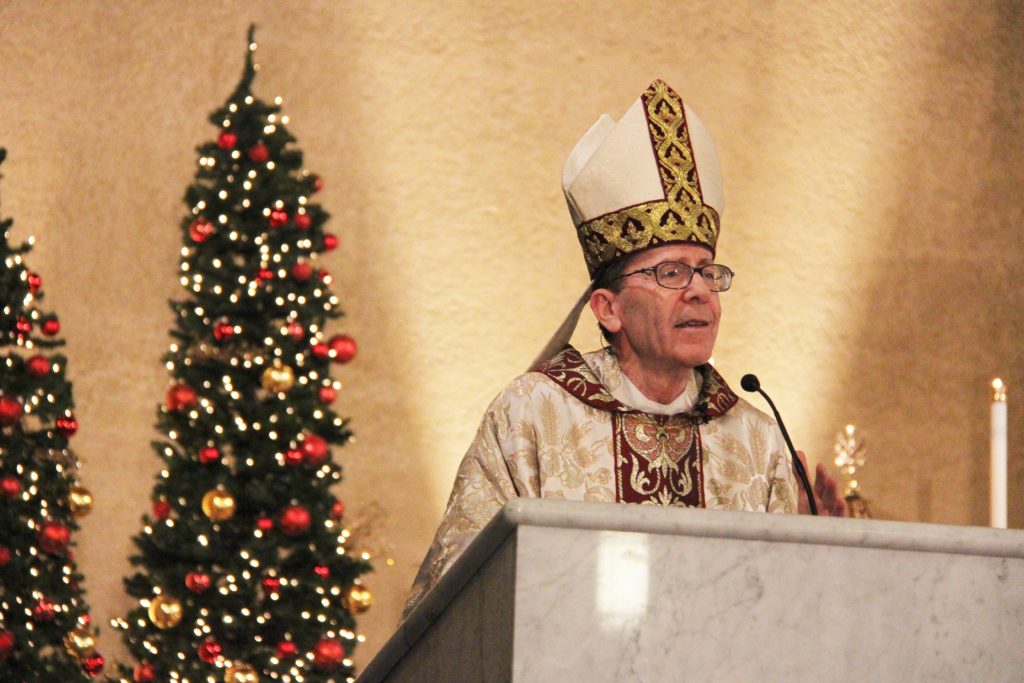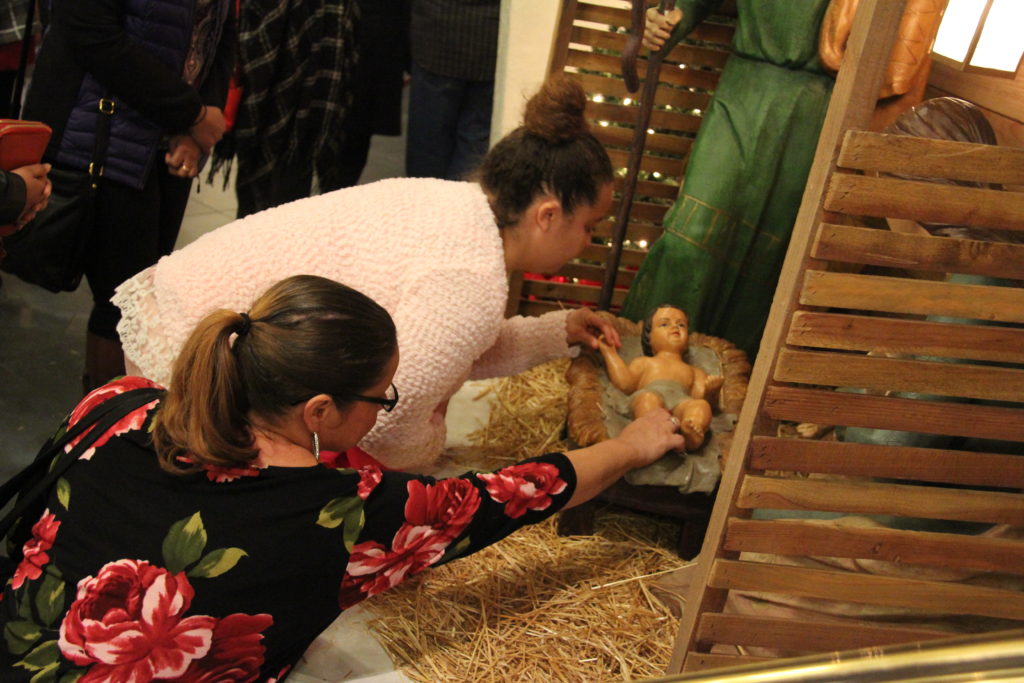
Click here for more photos from the Christmas Eve Midnight Mass at Ss. Simon and Jude Cathedral.
Drawing on lessons from the angels, the little town of Bethlehem, Caesar Augustus, shepherds and the Magi, Bishop Thomas J. Olmsted, highlighted true peace and the key to finding it in his Christmas message during Midnight Mass at Ss. Simon and Jude Cathedral.
“The peace of the Lord is what the shepherds felt as soon as they saw Mary and Joseph and the baby lying in the manger,” said Bishop Olmsted, drawing much of his message from St. Luke’s Nativity narrative.
He said that St. Luke “shows us a stark contrast between the kingdoms of earth and the Kingdom of God, between the Roman Emperor and the Savior of the world.”
Bishop Olmsted highlighted the irony of the nomadic shepherds who were not included in the census, but still had a front row view of the Son of God.
“The shepherds were the first, after Mary and Joseph, to see the kingdom of God breaking into our world. It came to the lowly and humble hearts and ones too insignificant to be counted,” he said.
During the opening procession at the beginning of Mass, Bishop Olmsted incensed the altar and the creche scene of Baby Jesus, Mary and a lantern holding Joseph.
At the beginning of his homily, the bishop drew attention to the multitude angels singing ‘Glory to God in the highest and on earth, peace.”
He noted that “this first Christmas hymn was not man-made” and its place in Sunday Masses throughout the whole world.
“The news acclaimed by the angels is of such joy that it could not just be announced, it had to be sung. And not sung by the Cathedral choir — but they’re very good — but sung by the heavenly choir,” he said.

Bishop Olmsted looked to Pope Emeritus Benedict XVI to anchor the dual themes, referring to the retired Pontiff as saying, “the song of the angels lifts up the importance of two things: the glory of God and the gift of His peace.”
He continued, giving a mini-treatise about the peace of God.
“It was a peace Caesar Augustus didn’t know and could not provide … nor has any emperor or king or president in history,” he said. “For the peace of Christ is far more than the absence of war; it’s where trust and brotherhood convey, where fear and pride are cast out. … Peace is where justice and mercy kiss, where truth and love embrace, where forgiveness restores dignity and hope.”
Then Bishop Olmsted pivoted to the other theme and said, “there can be no peace without the glory of God,” and we learn from the manger in Bethlehem that peace comes from God’s glory.
Bishop Olmsted taught that although God does not need our giving Him glory, instead the glorifying of God is needed and good for us with the internal change it brings.
“What we’re doing tonight, in worship and music and adoration, this is the way peace is built in the heart, where it must begin to be built. If you and I care about peace, if we care about the poor, the forgotten, we must care about the glory of God,” he said.
When God is not honored, “people are not honored and their dignity is lost and forgotten and trampled underfoot.”
However, the bishop said towards the end of his homily, “when Christ the King rules human hearts, there is peace, there is mercy and there is hope — there is singing and there is the bright light in the midst of any darkness.”
After the Mass concluded, a steady stream of the faithful, including children, venerated the Baby Jesus at the manger scene. With seemingly childlike innocence, a candy cane and small lollipop were left as gifts.







